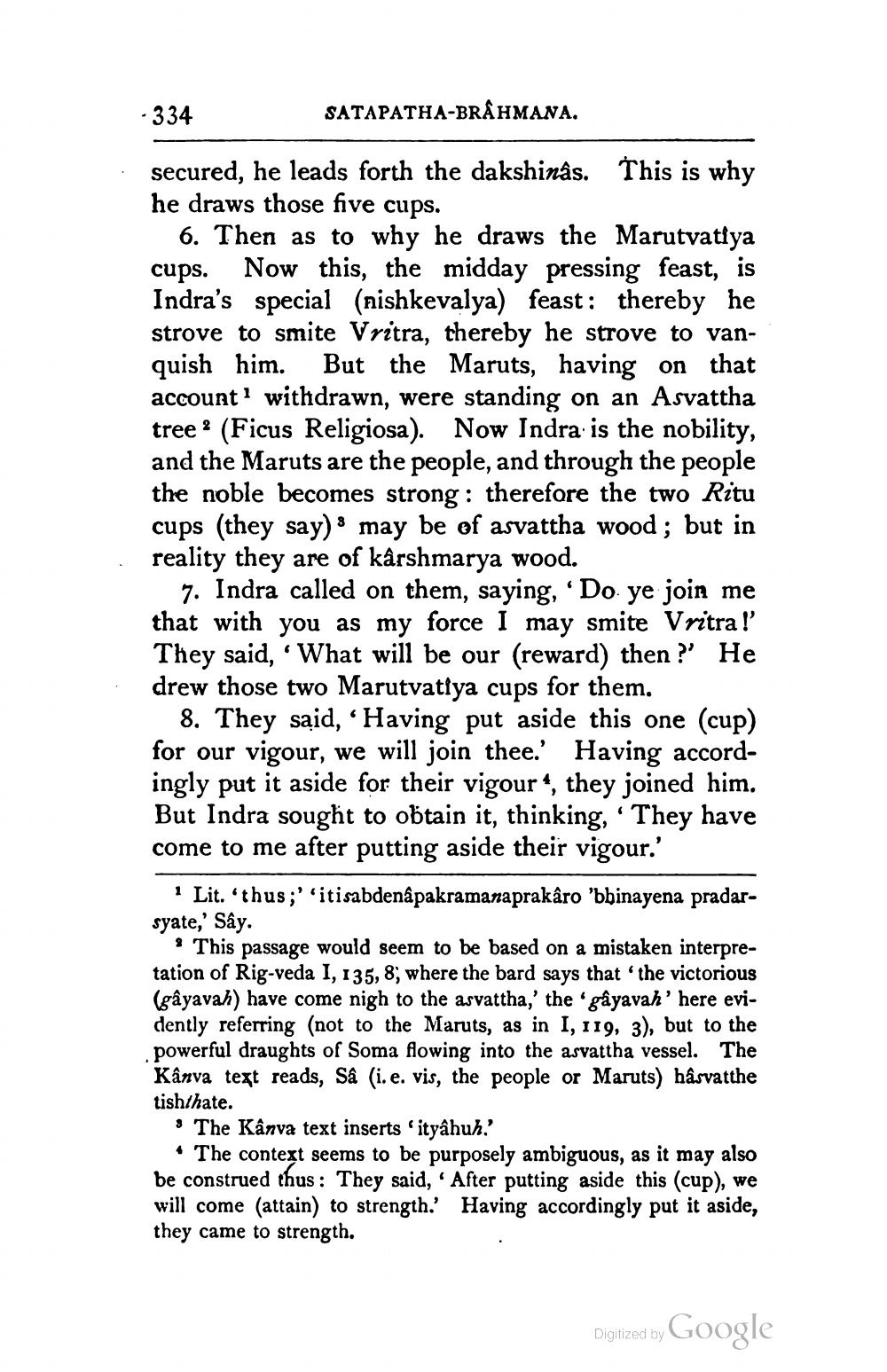________________
- 334
SATAPATHA-BRAHMANA.
secured, he leads forth the dakshinâs. This is why he draws those five cups.
6. Then as to why he draws the Marutvatiya cups. Now this, the midday pressing feast, is Indra's special (nishkevalya) feast: thereby he strove to smite Vritra, thereby he strove to vanquish him. But the Maruts, having on that account withdrawn, were standing on an Asvattha tree 2 (Ficus Religiosa). Now Indra is the nobility, and the Maruts are the people, and through the people the noble becomes strong : therefore the two Ritu cups (they say) s may be of asvattha wood; but in reality they are of kârshmarya wood.
7. Indra called on them, saying, 'Do ye join me that with you as my force I may smite Vritra !
They said, 'What will be our (reward) then ?' He drew those two Marutvatlya cups for them.
8. They said, “Having put aside this one (cup) for our vigour, we will join thee.' Having accordingly put it aside for their vigour 4, they joined him. But Indra sought to obtain it, thinking, 'They have come to me after putting aside their vigour.'
1 Lit. 'thus;''itisabdenâpakramanaprakâro 'bhinayena pradarsyate, Sây.
? This passage would seem to be based on a mistaken interpretation of Rig-veda I, 135, 8; where the bard says that the victorious (gâyavah) have come nigh to the asvattha,' the 'gâyavah' here evidently referring (not to the Maruts, as in I, 119, 3), but to the powerful draughts of Soma flowing into the asvattha vessel. The Kânva text reads, Så (i.e. vis, the people or Maruts) hâsvatthe tishthate.
• The Kânva text inserts "ityâhuh.'
• The context seems to be purposely ambiguous, as it may also be construed thus: They said, ' After putting aside this (cup), we will come (attain) to strength. Having accordingly put it aside, they came to strength.
Digitized by Google




